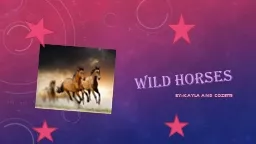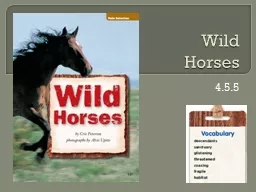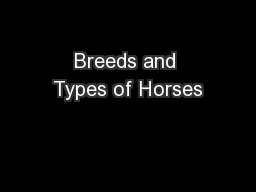PPT-Wild horses
Author : pamella-moone | Published Date : 2016-04-18
By Kayla and cozette Table of contents Introduction1 Characteristics2 Locomotion3 D ietFood Chain4 Habitat5 Adaptations6 Life Cycle7 Species Survival Statutus8
Presentation Embed Code
Download Presentation
Download Presentation The PPT/PDF document "Wild horses" is the property of its rightful owner. Permission is granted to download and print the materials on this website for personal, non-commercial use only, and to display it on your personal computer provided you do not modify the materials and that you retain all copyright notices contained in the materials. By downloading content from our website, you accept the terms of this agreement.
Wild horses: Transcript
Download Rules Of Document
"Wild horses"The content belongs to its owner. You may download and print it for personal use, without modification, and keep all copyright notices. By downloading, you agree to these terms.
Related Documents














